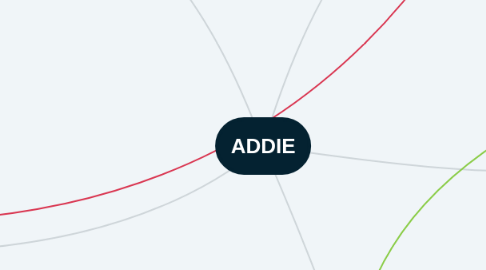
1. ANALYZE
1.1. Initial stage where team asks questions to determine the purpose and goal of the experience.
1.1.1. Who is the audience?
1.1.2. Why is this training necessary?
1.1.3. What is the desired outcome?
1.1.4. What is the timeline?
1.1.5. What are the pedagogical considerations?
1.1.6. How will this training improve the situation and/or business goals?
1.2. My take: Ask the big questions, find the big answers, and figure out how to get learners there.
2. IMPLEMENT
2.1. The team shares the finish product with the learners.
2.1.1. A pilot group is recommended for troubleshooting
2.1.2. Monitor closely for issues
2.2. My Take: Roll out the learning experience and pay attention to feedback.
3. EVALUATE
3.1. Each phase should be regularly evaluated through formative and summative assessments, and feedback should then be incorporated into changes made.
3.1.1. Ensure goals from ANALYSIS phase were met
3.1.2. Identify any gaps in learner knowledge
3.1.3. If necessary, change aspects of course, such as ineffective media
3.1.4. Get learner feedback through surveys
3.2. My Take: Evaluate at every phase, and make adjustments as necessary. Edit, rewrite, edit---or throw it out and start over if necessary.
4. DESIGN
4.1. The team creates a detailed blueprint for learning based on the ANALYSIS phase.
4.1.1. Create exercises and content based on learning objectives
4.1.2. Plan lessons
4.1.3. Select Media
4.1.4. Create a storyboard
4.1.5. Create a prototype
4.1.6. Clearly communicate the value of the learning experience
4.1.7. Test the prototype
4.2. My take: The fun part! Create engaging, learner-centered experiences.
5. DEVELOP
5.1. Based on previous phases and in-process evaluation, the team creates the actual course.
5.1.1. Add graphics
5.1.2. Choose engaging graphic design elements, such as colors and fonts
5.1.3. Make sure course appeals to learners
5.1.4. Edit and proofread copy thoroughly
5.1.5. Test the course thoroughly
